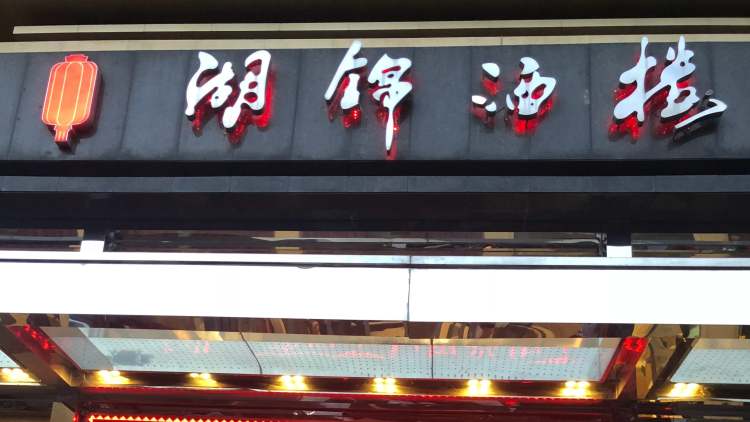Founded in 2003, there are more than 10 branches, some of which are mainly engaged in Hubei cuisine, and the other part is mainly promoted by steamed seafood. Different from ordinary chain brands, each branch of Coarse Tea Light Rice has its own characteristics, including Republican style, Chinese classical and Russian style, etc., all of which are chic and elegant, unique and suitable as a banquet place.
The Hankou Mansion store has a Shanghainese atmosphere, revealing a combination of Chinese and Western styles of the Republic of China. The restaurant features a dark wooden structure with a parquet floor accented with copper fans and antique porcelain, as well as black-and-white old photos and vintage lampshades. The No. 1 restaurant was renovated by the Russian Consulate, and the decoration is also in the style of the Republic of China, but it is more magnificent. The use of logs and greenery creates a fresh and quaint atmosphere. The Lanting Courtyard store is a Chinese-style design, with bamboo and stone and celadon as the main decorations, which is quite ancient. The Wuchang City store is also in the classical Chinese style, with ancient tripods and stone statues, revealing a little ancient city charm. The environment is brilliant, and the service is also top-class, the waiter is considerate and enthusiastic, takes the initiative to recommend dishes, can add tea and water in time, and uses plastic covers to keep the dishes warm when serving in winter, and the details are thoughtful. Most of the waiters are middle-aged women, who are not as respectful as the restaurant staff, nor are they different from the casual casual of home-cooked restaurants, but are gentle and polite and cordial. In addition, the low mobility of the staff makes the level of dishes and service relatively stable, which shows that the restaurant has perfect management.
The dishes of coarse tea and light rice are roughly divided into hot dishes, cold dishes, steamed dishes, Haihe fresh, farm dishes, soups, etc., which are relatively rich. In addition to Hubei cuisine, the restaurant also has Cantonese cuisine, Hunan cuisine, Sichuan cuisine and Western cuisine, and there are many of them. The positioning of each branch is different, and the dishes are also different. Hankou Mansion, After Tea and Dinner, Wuchangcheng and other restaurants are mainly Hubei cuisine, and the dishes are plain, which is more suitable for relatives and friends to have dinners. Restaurants such as No. 1 Dining Room are oriented to business and group dining occasions, and because Hubei cuisine is home-cooked and not very suitable for formal banquets, Cantonese cuisine and Western food are included in the main dishes.
Although the coarse tea and light rice dishes are mixed, the Hubei cuisine is still authentic and worth trying. In addition to meat balls and fish balls, vegetarian foods such as tofu and lotus root can also be made into balls. The tofu balls with coarse tea and light rice have endured for a long time, and many regular customers must order them here. Tofu balls are quite common in Hubei restaurants, but tofu is not as sticky as meat, not easy to form, and has a weak taste, so there are not many outstanding people. The glutinous rice is soaked a day in advance, making the balls easier to shape, while the tofu is made on the same day by the supplier, which is fresh enough. Tofu mixed with a little ginger, wrapped in glutinous rice and steamed. The balls are three-dimensional but not soft, the taste is soft and glutinous on the outside and smooth on the inside, the bean aroma is rich, and the taste is refreshing. In addition, coarse tea and light rice also have local pork balls, Qingjiang fish balls and other round dishes, the taste is acceptable, not as amazing as tofu balls.
When it comes to the representative vegetarian food of Hubei cuisine, cabbage can be called the uncrowned king. Rapeseed and Wuchang fish are to Hubei cuisine, which is equivalent to crayfish and hot dry noodles to Wuhan. The climate and soil in the Hongshan area are very suitable for the growth of rapeseed, and the appearance of the rapeseed produced is bright and deep purple, and the fragrance is sweet. The biggest highlight of the cabbage is that the stalk is crisp and sweet, unlike most vegetables, the stem has more fiber and less juice. In addition, cabbage is a seasonal vegetable that is best eaten in winter. Overall, Hongshan cabbage is the icing on the cake version of a high-quality vegetable, and it's worth a try, but it's not as amazing as the online reviews. Controversy aside, there are some restaurants in Wuhan that offer some of the best dishes, such as coarse tea and light rice, and the selected vegetables are of the highest quality, stir-fried, spicy and sour or paired with bacon.
In addition to the classic Hubei dishes, coarse tea light rice has also launched many innovative Hubei dishes, such as beef bean skin, double pepper Wuchang fish, etc. Tofu skin is a special snack in Wuhan, made from glutinous rice, dried tofu, diced pork, etc. Traditional tofu skin does not contain beef, and the restaurant sandwiches beef with glutinous rice, and the outer skin is fried for a longer period of time, making it crispier and less greasy than a street snack. Overall, the beef tofu skin is not as good as the classic snack bar, but the taste is special, and it doesn't hurt to try it once in a while. Double pepper Wuchang fish is an improvement of the steamed version, the fish slice is steamed and sprinkled with fried green pepper pepper, the flavor of double pepper is not integrated into the fish meat, although the Wuchang fish is fresh but not flavorful, so it is not recommended.
In addition to Hubei cuisine, coarse tea and light rice will also improve Cantonese and Sichuan cuisines such as Buddha jumping over the wall and wooden barrel tofu, which is more in line with the taste of Wuhan diners. Overall, coarse tea and light rice are mainly fusion dishes, which are quite innovative, but the standard is uneven.








